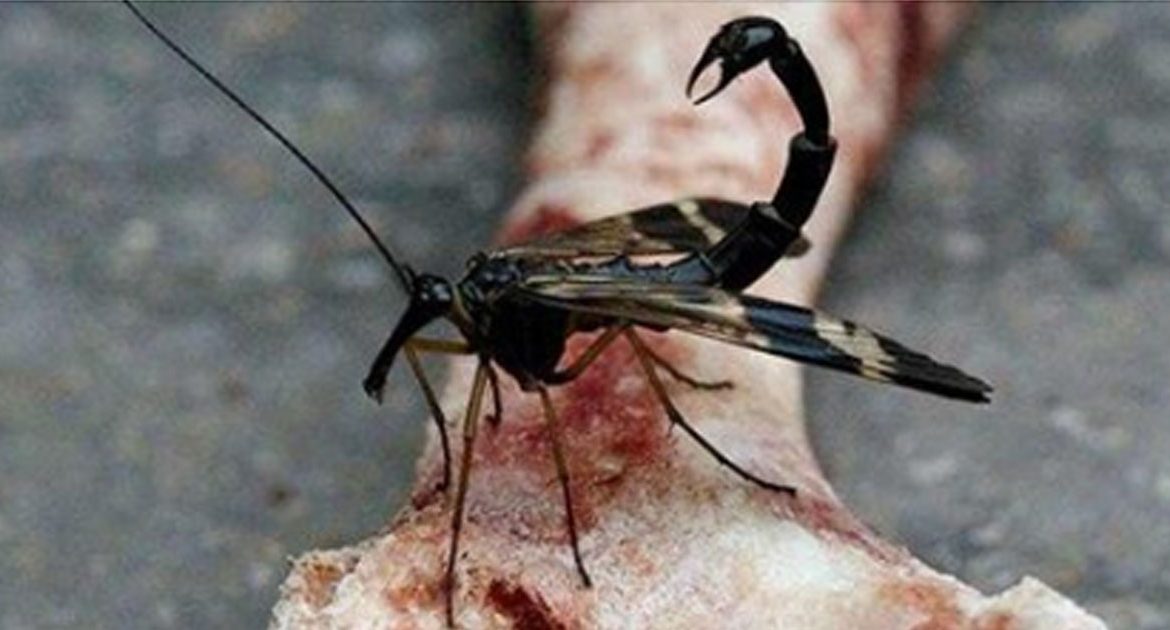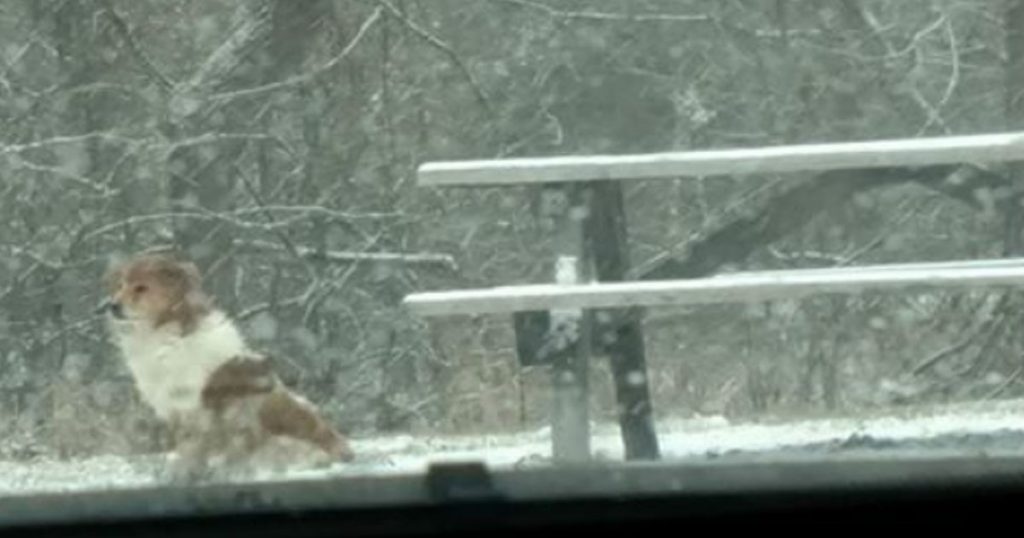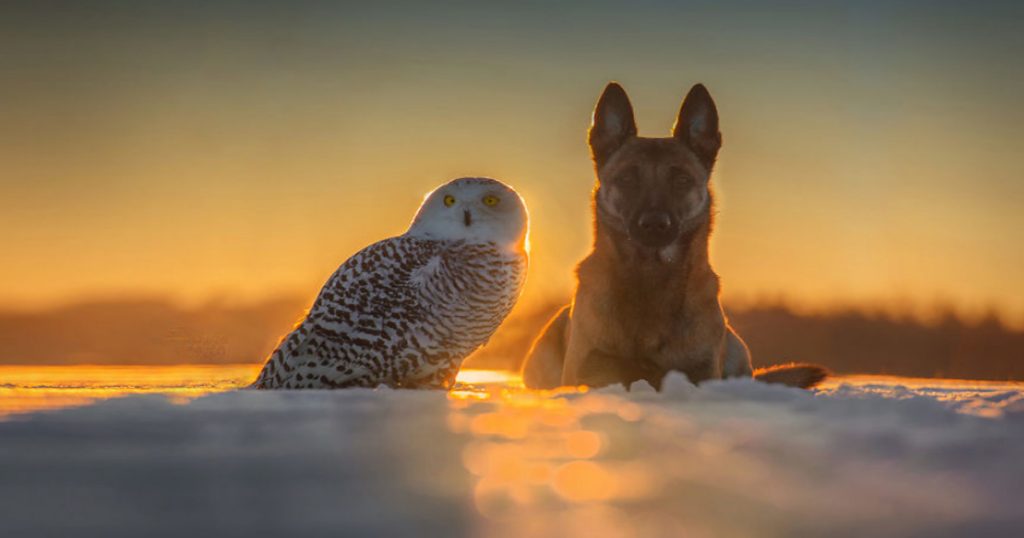Looking more like a monster in a David Cronenberg film than an actual insect, the scorpionfly inspires instant shivers of disgust. These winged monstrosities are the kind of nightmare fuel that will trigger a panic attack in even the bravest entomologists. But while they may look like terrifying omens of death, scorpionflies are actually harmless to humans. Still, it’s understandable if your first reaction to stumbling on one in the wild looks more or less like Munch’s The Scream.
While scary scorpionflies can be found on most continents around the globe, there is still a lot of research that needs to be done to better understand these frightening insects. The facts about scorpionflies that people do know are as weird and unsettling as their appearance suggests. Here’s everything you need to know about the creatures from the order mecoptera, insects that deserve their reputation as some of the creepiest and most bizarre bugs in the in the world.
They Are Neither Scorpions Nor Flies

While these insects may look like flying, stinging death-monsters, they actually don’t have very much in common with flies or scorpions. Scorpions are arachnids, not insects, and are more closely related to spiders than true bugs. Scorpionflies belong to a group of insects known as mecoptera, an order that also includes hangingflies.
Their «Stingers» Are Actually Male Genitalia
The one good thing about scorpionflies is that they are completely harmless. Despite their dangerous appearance, the tails of the scorpionfly do not come equipped with any kind of stinger. Instead, the bulbous tip is actually male genitalia. Only male scorpionflies have this appendage; the end is meant to pinch down on the female to hold her in place, making copulation that much easier for the male.
Scorpionfly Sex Is Traumatizing and Disgusting

Scorpionflies have one of the most depraved and disgusting sex lives in the animal kingdom, and that’s saying something. Males start the process by violently vibrating their wings in excitement and releasing sex pheromones upon the sight of a female. Some species present the females with gifts of dead and decaying insects, which she feeds on during the act of mating. If the male doesn’t bring a tasty treat, he will instead produce globs of saliva from his mandibles that the female slurps up in excitement.
Mating can go on for hours, and is most often aggressive and nonconsensual. Females usually try to shake off the males. Scorpionflies have also been observed having vigorous sex on human corpses, stopping mid-session to feast on the rotting flesh.
Homicide Detectives Use Them To Determine The Age Of A Corpse

It’s no secret that all sorts of insects are attracted to rotting corpses. Forensics experts have relied on the presence of creepy critters to determine how long a person has been dead. Blowflies were thought to be the first bugs on the scene to start feasting on a cadaver, with some species laying eggs in the bodies just minutes after death.
Further research into the subject has revealed that scorpionflies, not blowflies, are the animals most likely to first start feasting on a fresh corpse. The order in which insects are attracted to bodies is important to investigators, as it helps create a detailed timeline of decomposition. Studying unique insect feeding habits can also help determine which wounds were part of the crime and which were inflicted by scavenging bugs.
They Have Terrifying Elongated Mandibles

Scorpionfly faces are almost as unnerving as their freaky tails. Their mouths are serrated, which makes them perfect for tearing into flesh and chewing up their food. Their unusually long mandibles can burrow into the husks of their victims and get at the soft interior.
They Will Eat Basically Anything

Like many creatures in the insect world, scorpionflies are not afraid to gobble up even the foulest of meals. Besides their love of feasting on human corpses, they also eat insects, fruit, each other’s saliva, pollen, and nectar.
Females are often given gifts of food to eat during mating, and some sly males have learned to take advantage of this. Male scorpionflies have been observed to trick other males into giving them a nuptial gift, and they do this by mimicking an aroused female.
They Love Sipping On Human Sweat

Scorpionflies have no issue with eating people when they’re dead, so it’s not surprising humans are fair game when they’re alive, too. They’re known to seek out human sweat for a quick sip.
They’re Elusive Creatures

Some species of mecoptera, like the Florida scorpionfly, have managed to elude researchers looking to study them in the wild. Scientists only have a handful of specimens, the latest of which was collected in 1982. This has led to speculation that they may be incredibly rare, or possibly even extinct, but researchers don’t believe that’s the case. A photograph was taken of a wild Florida scorpionfly in 2010, confirming that the species is still around. They’re probably just difficult to find in the dense undergrowth of North Florida’s forests.
Nowhere On Earth Is Safe From Them

While scorpionflies are not the most diverse group of insects, they are very widespread. Pretty much every continent on Earth is home to at least one species of scorpionfly, with the sole exception of Antarctica. They tend to live at the edges of dense forests, but can also be found in a diverse variety of other ecosystems and biomes.
They May Share An Ancestor With Fleas

Scientists have tried to get a better picture of the evolutionary history of mecoptera for years, and they have come to some amazing conclusions. It is believed that the insects of mecoptera may share a common ancestor with fleas.
While they are much smaller, studies suggest fleas are likely just a highly specialized lineage of mecoptera. Unlike scorpionflies, fleas have no wings. However, they do have powerful legs that allow them to hop vast distances in single bounds. Well, vast distances for them.
Larvae Go Through An Elaborate Metamorphosis

Scorpionflies go through a lot of trouble to look like the freaks that they are. They are born as caterpillar-like larvae, living in the dirt on the forest floor and surviving off dead and decaying food matter. They are omnivorous, so they’re not too picky about what they stuff in their faces: dead insects, rotting leaves, basically anything they can scavenge.
When it comes time to pupate, the larvae burrow deep into the soil and begin their metamorphosis. When they emerge, they will be fully formed adult scorpionflies.






